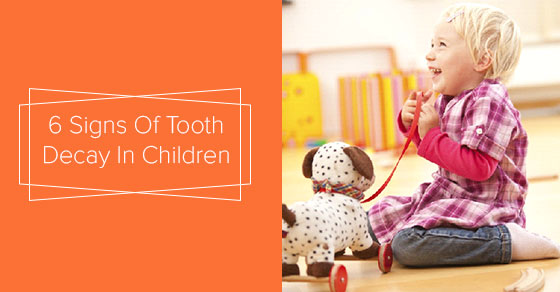
Signs of tooth decay in young children are similar in adults. Likewise, the causes of tooth decay in children are similar to those for adults. Because it can be more difficult to spot tooth decay in infants and toddlers, read further for six signs of tooth decay in children.
Baby teeth usually develop between three and nine months. As soon as they can be seen, they become susceptible to decay. The very earliest signs of tooth decay in children are white spots on the teeth. These spots look chalky and are nearest to the gums area.
In these early stages, fluoride treatments and altering your child’s diet can help stop the spread.
You may be surprised to learn that pediatric dental disease is the #1 chronic childhood disease. If tooth decay becomes severe and your child loses their baby teeth prematurely, it can lead to other issues.
Since decay usually is found in the front baby teeth, premature loss of baby teeth can affect chewing as well as the spacing and alignment of their permanent teeth. This, in turn, can lead to issues with speech.
Taken in their entirety, parents should be aware of these additional signs and should not delay scheduling an appointment with an experienced pediatric dentist:
Some of these signs, like fever and irritability, can be indications of other childhood issues, but do not ignore the possibility of tooth decay and infection.
As mentioned earlier, the causes of tooth decay are the same for adults and children. Acid and bacteria combined with sugars found in food and drinks damage the enamel, leading to cavities and tooth decay.
Similarly, many of the same ways we prevent adult tooth decay applies to our children.
Regularly check your child’s teeth for any signs of tooth decay.
Contact Oakville Place Dental Office with questions about childhood tooth decay or to make an appointment with one of our pediatric dentists.
 0 Comment
0 Comment